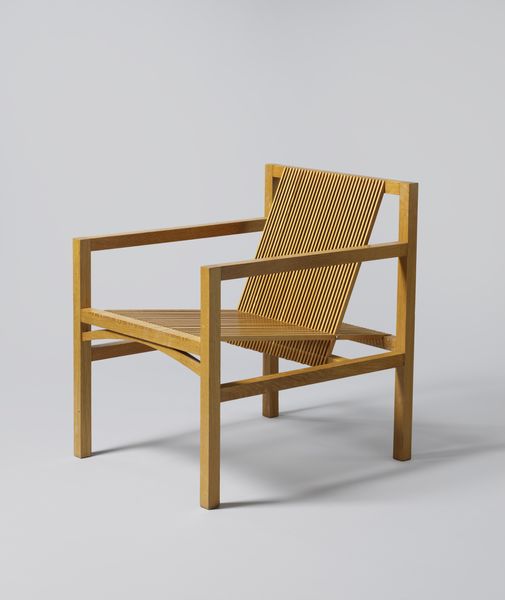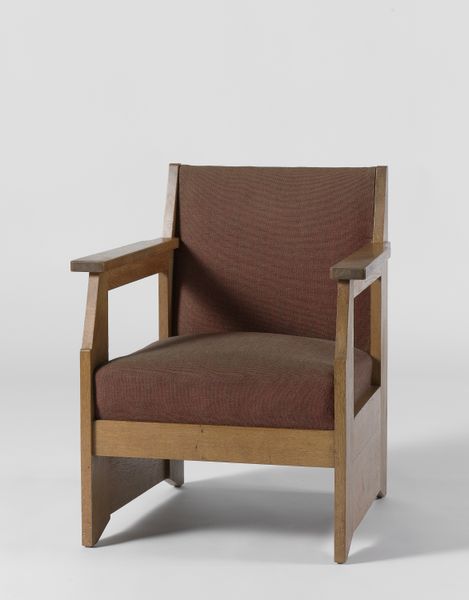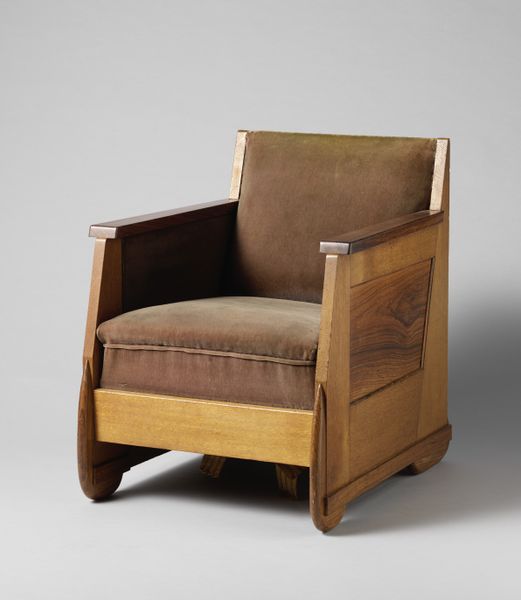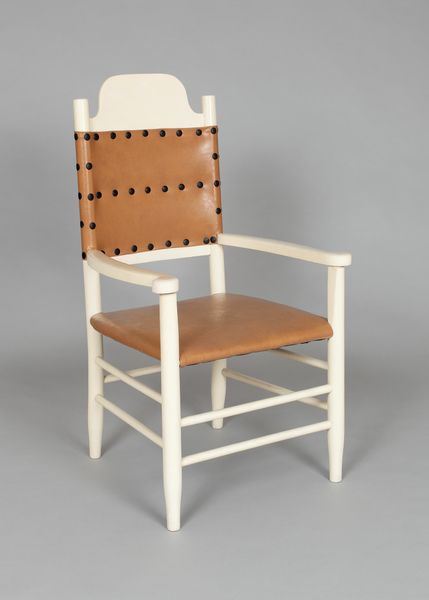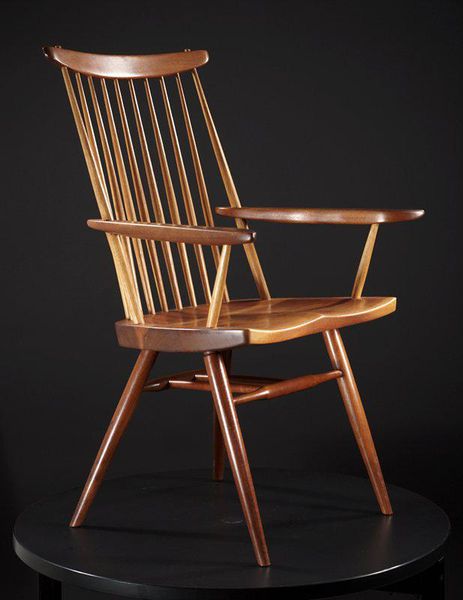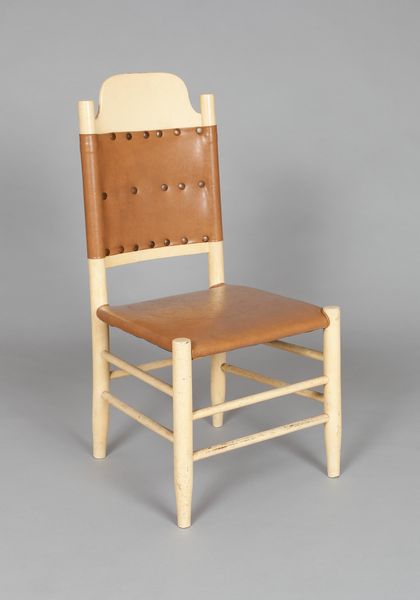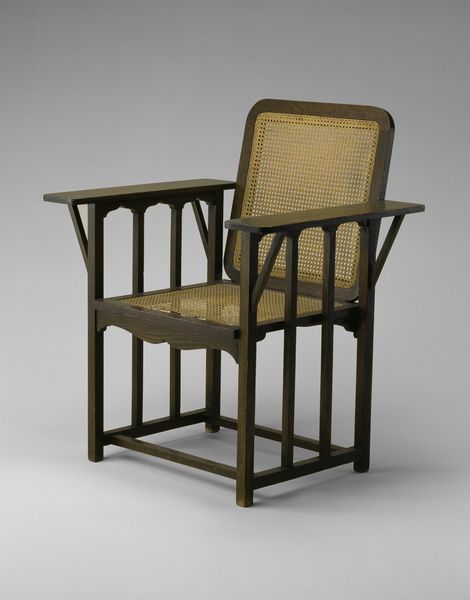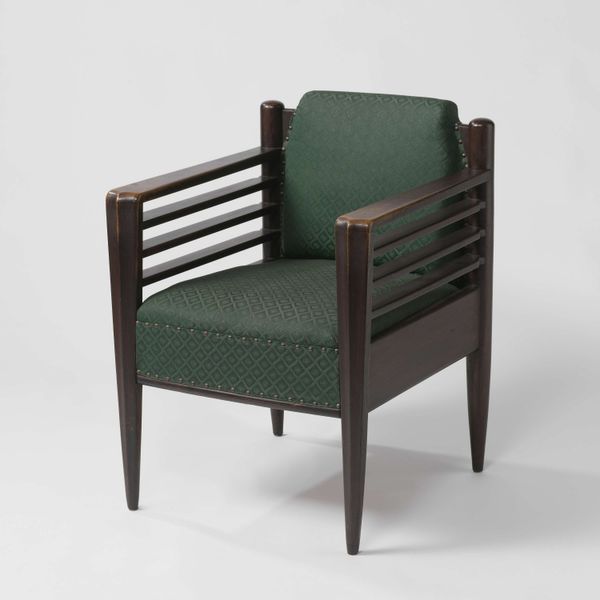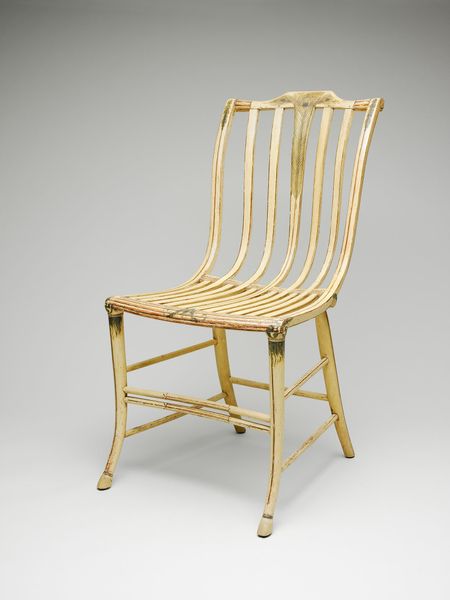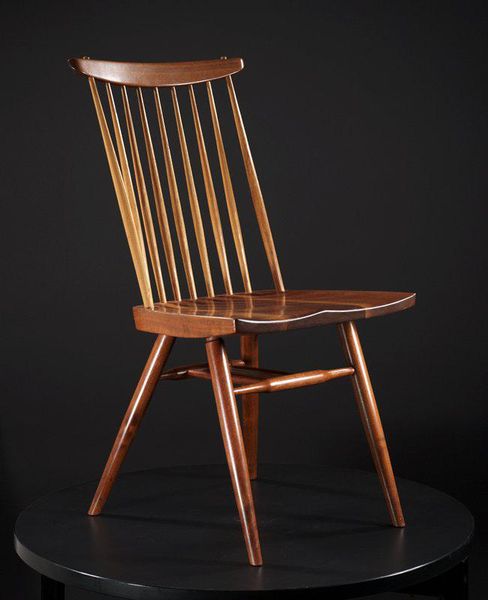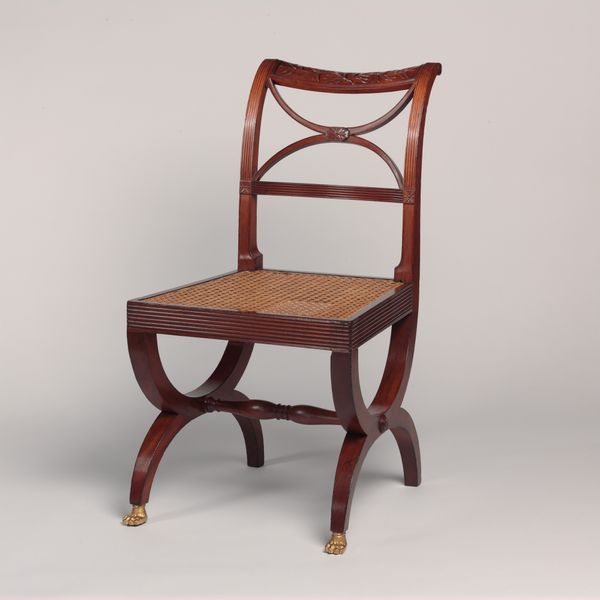
wood
#
furniture
#
abstraction
#
united-states
#
wood
Copyright: No Known Copyright
Editor: This is Ralph Rapson’s "Rocker," designed around 1945 or '46. It’s made of wood with woven fabric for the seat and back. It has a very clean, almost diagrammatic feel. What can you tell me about this piece? Curator: Considering the "Rocker," let’s think about its construction and the materials used. What does the choice of wood and woven fabric suggest to you about the design ethos of the time? It rejects elaborate ornamentation, prioritizing functionality. The way it's constructed elevates traditionally "lower" or functional items to fine art. Editor: So, its value is as much in its design and making as in its use? It’s more than just a chair to sit on. Curator: Exactly. Think about post-war America. Mass production was on the rise. This chair seems to grapple with the intersection of handcrafted quality and industrial possibility. Its social commentary highlights what it meant to produce—and consume—during that period. Editor: That’s interesting, especially looking at it now. What was the usual approach to chair design and how this one is disrupting the paradigm? Curator: We could reflect upon bentwood furniture as a precedent or the more handcrafted Arts and Crafts Movement of decades earlier, however, those precedents generally were not designed to be so seamlessly scaled and available for broad consumption. This chair merges craft techniques with an eye toward potential mass manufacturing processes and ideals of "good design." Editor: This is helping me see that everyday items reflect values. This chair represents those tensions in post-war America perfectly. Curator: Yes, it really allows us to reflect on the connections between design, labor, and cultural values, and I appreciate that point. I'm glad to have given you another perspective to reflect upon!
Comments
minneapolisinstituteofart almost 2 years ago
⋮
Architect Ralph Rapson was one of the first designers recruited by Hans Knoll to position Knoll Associates as a modern furniture firm. Though few of Rapson’s designs actually went into production, this rocker was well received and became the signature piece of the Rapson Line. A familiar form updated with a bentwood frame and webbed seat and back, the design is especially significant for Minneapolis, where Rapson moved in 1954 to head the University of Minnesota School of Architecture. The Rapson Line was only manufactured from 1945 to 1946, with materials available during World War II (1939–45).
Join the conversation
Join millions of artists and users on Artera today and experience the ultimate creative platform.
